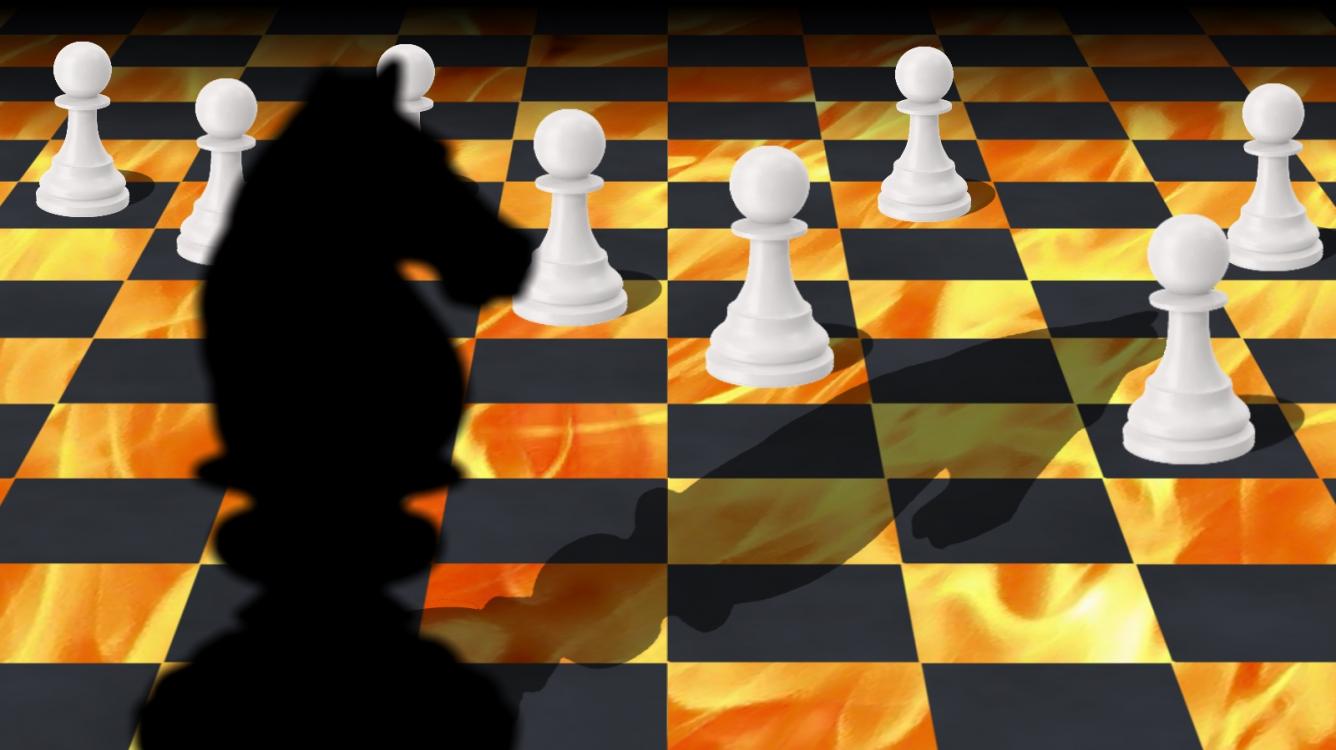
The Knight's Gambit
No! It's not a new opening line. It rather appears in the middlegame. Nor something on Faulkner's famous novel. By the term Knight's Gambit I'm trying to name the situation where a Knight is moved and placed on an en prise by a pawn square, without capturing anything. A possible empty square sacrifice, where the player gains an advantage either by losing the Knight or not.
The idea for this blog - mini collection of mainly recent games - came up after reading an article by GM Avetik Grigoryan [How to Improve Your Tactical Vision in https://chessmood.com/blog/how-to-improve-your-tactical-vision], where a relevant Postny vs Gabuzyan game is presented. Of course under a professional chess coaching view.
The search for the following games was of the most fun procedures. Maybe cause these Knight empty square sacrifice patterns were reminding me moves I'm usually making while playing my pet opening. Meaning a knight on g5 [or g4 if I'm black] threatened by h pawn and supported by my h pawn, with my Q on c2 [or c7], something like Smith - Morra. One of my recents here to get the idea...
_
...and a Knight on g5 en prise, played in a higher level. A game that made me feel that my opening choices are more justified![]()
_
But I should say that playing my pet opening as black, I have suffered a lot by a Knight on d5 threatened by my pawn on e6 but supported by one on e4 while a rook on e1 is pinning my uncastled King. I hope you've understood the position like this, as my ego doesn't allow me to show you any game![]() !
!
I've looked a little and in older games. And one of the earliest I've found, where the aforementioned pattern-theme of a Knight's gambit [in a more general approach] was applied, is the following...
_
Trying to categorize:
Without reading anything relevant [meaning that possibly there's somewhere written some surely better approach], I've tried to look at recent games for this pattern - theme, in order to categorize it and understand-remember it more easily. The categorization that follows has been written with a lot of doubt, but I think that I've managed to cover the majority of cases. All the following games are of the last 2,5 years and in all is white that tries this pattern [it was easier to track white's move with the software I used].
So... [if you want to skip my theory concerns, press this to go to the positions...]
_
For this theme it seems that two elements-threats are needed, existing at the same time:
a. A knight's threat or possible advantage on its new en prise square.
The knight should threaten for something. That could be a possible following capture, controlling a square, blocking the opponent's path [though this latter is a little grey area, as it can appear as an element of the following 2nd kind], or even just passing for a better square.
b. An other threat, besides the aforementioned knight's one.
A threat that could be realized if the gambit would be accepted and the knight's lost. And here is I think where I could start categorizing the patterns I've found. This threat can be divided mainly into two main groups:
1. The other threat appears by the knight's move. This threat seems more dangerous as exists whether the knight's possible gambit is accepted or not. Accepting the gambit is just giving a necessary tempo. And can be divided into:
1.1. A threat like a discovering attack. That could be freeing a file, a row, a diagonal or even just a specific square.
1.2. The knight is blocking a path of an opponent's piece [a threat that can be found as the 1st element too]. But here, many times supported by a pawn, is making things difficult, keeping the path blocked.
2. The other threat appears if the gambit is accepted. That could be:
2.1. A misplacement of the opponent's capturing pawn, eg stopping supporting a piece or controlling a square, but also opening a file, row or diagonal.
2.2. A potential recapture. That could either create a new threat by the capturing piece or open a file, row or diagonal, too.
All the above could be combined of course. Some games are following, selected mainly for the crucial position & categorized according to the second element the "other threat".
_
b-1. Threat by the Knight's move as the 2nd element
Cases that seem to appear less often in a higher level. I think possibly cause are maybe more obvious as threats.
b-1.1. Discovery attack [adv] up
_
_
_
b-1.2. Knight's block as 2nd element up
_
b-1.- And some more complicated in categorizing
_
_
_
b-2. Threat by accepting the gambit up
Here more cases appear.
b-2.1. Opponent's pawn misplacement
Just 7 cases-patterns
_
_
_
_
_
_
_
And four ones maybe more complicated, where they are appearing and other elements, mostly the recapturing one.
_
_
_
_
b-2.2. Threat by recapturing up
The power of the recapturing pawn - 4 cases.
_
_
_
_
The power of the recapturing piece - 3 cases.
_
_
_
and 1 more.
_
I hope that the categorization that I've tried is handy somehow, though maybe a little naive. But in any case this pattern seems fascinating and it was fun searching for these games and looking at the patterns...
...thanx for reading

